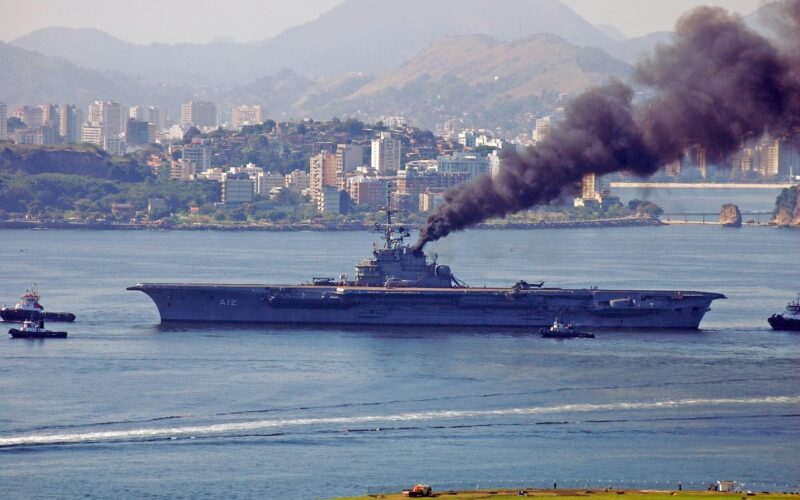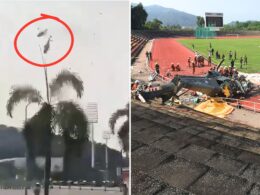The tugboat towing Brazil’s decommissioned aircraft carrier NAe Sao Paulo has been tracked sailing back to Rio de Janeiro on September 8, 2022.
The NAe Sao Paulo started its life as the Foch, a French Clemenceau-class aircraft carrier, built in the late 1950s and commissioned in 1963. The ship operated a carrier wing of 40 fighters (Dassault Etendard and then Super-Etendard).
In 2000, it was sold to Brazil for €12 million, where it served as the flagship of the Marinha do Brasil (the Brazilian Navy) with a flotilla of 22 A-4 Skyhawk fighters.
In 2017, it was retired from service, and decommissioned a year later. In 2021, the carrier was sold to be scrapped to the Turkish demolition yard SÖK Denizcilik.
Its journey began on August 4, 2022, when the aircraft carrier left Rio de Janeiro towed by the Dutch tugboat Alp Centre. It was bound for the shipyard in Aliağa, on Turkey’s western coast, where it was to be dismantled.
However, on August 26, 2022, as the ship and its tugboat were off the Moroccan coast and preparing to enter the Mediterranean Sea through Gibraltar, the convoy came to a stop.
What happened?
In an official statement, Turkish Minister of the Environment Murat Kurum explained that the entry of the aircraft carrier into the country’s waters was suspended, conditioned upon a new hazardous materials inventory report.
An initial report submitted by the Brazilian authorities was judged dubious, with major differences in the quantity of identified hazardous materials compared to ships of the same class and period.
For example, it estimated the presence of only 9.6 tonnes of asbestos when the Clemenceau, the Foch’s sister ship, contained at least 600 tonnes of this cancerous material formerly used for fireproofing.
The survey did not detect PCBs, a material commonly used in insulation in the 1950s before being banned in the 1970s for being highly carcinogenic. There again, 165 tonnes of PCBs were found in the Clemenceau.
Finally, the NGO Ban Abestos France noted that the Foch was involved in securing the French atmospheric nuclear tests in the Pacific Ocean in the 1960s.
“The presence of 170 tonnes of lead/cadmium paint could retain radioactive contamination, as well as the lack of information on the prior removal of radioactive equipment, raise fears that the ship is contaminated despite claims to the contrary,” the NGO wrote in a statement.
Early on September 8, 2022, the Turkish member of parliament Ednan Arslan noted that the Alp Centre tugboat set its destination back to its port of departure. With the NAe Sao Paulo now sailing back to Rio de Janeiro, its fate remains unclear.
AeroTime reached out to the Ministry of Defense of Brazil for comment.
“Nae Sao Paulo” savaş gemisi, rotasını güncelledi. Gemi’nin son hedefi Rio de Janeiro Limanı.
Halkın tepkisine karşın bir şey yapılamayacağını, hem iktidar hem çıkar odakları artık anlamıştır diye düşünüyorum. #İzmir #Asbest #NaeSaoPaulo pic.twitter.com/QgqpkIeaNd— Ednan Arslan (@ednanarslanchp) September 8, 2022
Ironically, the Clemenceau had known a similar fate. In 2006, the aircraft carrier was blocked by Egypt as it was about to transit through the Suez Canal to be dismantled in India. Following the decision of the Indian authorities not to receive the Clemenceau after all, the warship returned to Brest, the port where it had been built fifty years earlier. The dismantling was eventually taken over by the British company Able Ship Recycling.









